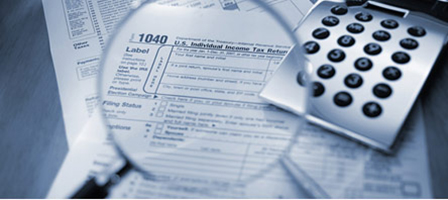KNOW THE RULES BEFORE YOU BREAK OPEN YOUR RETIREMENT PIGGY BANK
Article Highlights:
- Early Withdrawal Penalties
- Reduction in Retirement Savings
- Exceptions from the Early Withdrawal Penalty
If you are looking for cash for a specific purpose, your retirement piggy bank may be a tempting source. However, if you are under age 59½ and plan to withdraw money from your Traditional IRA or qualified retirement account, you will likely pay both income tax and a 10% early distribution tax (also referred to as a penalty) on any previously untaxed money that you take out. Withdrawals from a Simple IRA before you are age 59½ and during the “2-year period” may be subject to a 25% additional early distribution tax instead of 10%. The 2-year period is measured from the first day that contributions are deposited. These penalty rates are what you’d pay on your federal return; your state may also charge an early withdrawal penalty in addition to regular state income tax.
So before making any withdrawals from an IRA or other retirement plan, including 401(k) plans, 403(b) tax sheltered annuity plans, and self-employed retirement plans, carefully consider the resulting decrease in your retirement savings and the increase in tax and penalties.
There are a number of exceptions to the 10% early distribution tax depending on whether you take money from an IRA or a retirement plan. But even if you are not subject to the 10% penalty, you will still have to pay taxes on the distribution. The following are some exceptions that may help you avoid the penalty.
- Withdrawals from any retirement plan to pay medical expenses – Amounts withdrawn to pay unreimbursed medical expenses that would be deductible on Schedule A during the year and that exceed 10% of your AGI are exempt from penalty. This is true even if you do not itemize.
- Withdrawals from any retirement plan as a result of a disability – You are considered disabled if you can furnish proof that you cannot perform any substantial gainful activity because of a physical or mental condition. A physician must certify your condition.
- IRA withdrawals by unemployed individuals to pay medical insurance premiums – The amount that is exempt from penalty cannot be more than the amount you paid during the year for medical insurance for yourself, spouse, and dependents. Unemployment compensation must have been received for at least 12 weeks.
- IRA withdrawals to pay higher education expenses – Withdrawals made during the year for qualified higher education expenses for yourself, spouse, or children or grandchildren are exempt from the early withdrawal penalty.
- IRA withdrawals to buy, build or rebuild a first home – Generally, you are a first-time homebuyer for this exception if the you had no present interest in a main home during the 2-year period ending on the date of acquisition of the home which the distribution is being used to buy, build, or rebuild. If you are married, your spouse must also meet this no-ownership requirement. This exception applies to the first $10,000 of withdrawals used for this purpose. If married, both you and your spouse can withdraw up to $10,000 penalty-free from your respective IRA accounts.
- IRA withdrawals annuitized over your lifetime – To qualify, the withdrawals must continue, unchanged, for a minimum of 5 years and after you reach age 59½.
- Employer retirement plans withdrawals – To qualify, you must have separated from service and be age 55 or older in that year (age 50 for qualified public service employees such as police and firefighters); or elect to receive the money in substantially equal periodic payments after separation from service.
You should be aware that the information provided above is an overview of the penalty exceptions and there may be additional conditions, not listed, that must be met to qualify for a particular exception. You are encouraged to contact this office before tapping your retirement funds for uses other than retirement. Distributions are most often subject to both tax and penalties that can take a significant bite out of the distribution. However, with carefully planned distributions, both the tax and penalties can be minimized. Please call for assistance.






Leave a Reply
Want to join the discussion?Feel free to contribute!